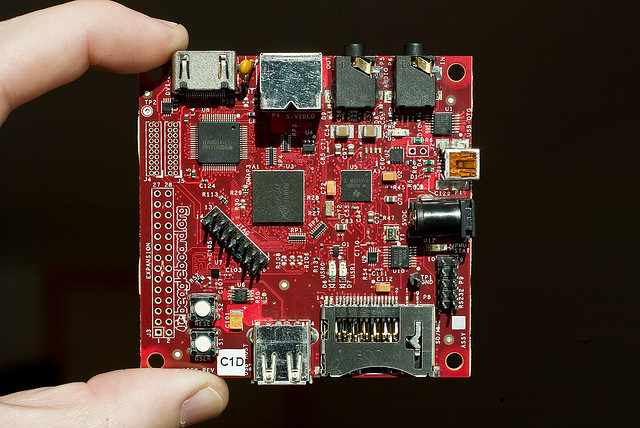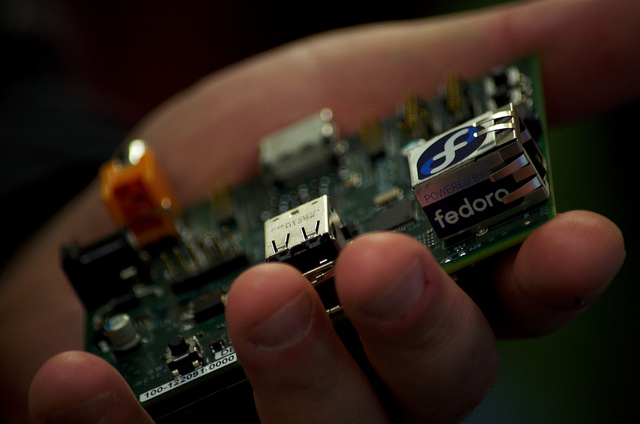Mobile computing has already had an enormous impact on music making. A modern phone or tablet (and yes, most often, these come from Apple) is capable of out-performing a lot of dedicated hardware and easily runs the synths and workstations that required state-of-the-art desktops just a decade or so ago.
But what if this same computing power – low-energy, low-cost chips – could be in other music gear, too? They could offer significant advantages. Bare boards, while on their own not quite road-ready, can wind up in music-friendly housings. (Think stompboxes – without stomping on your phone, or buying a big, silly dock.) You’ll never have to sign a contract with a phone company to get one, or stop your latest song sketch to take a call. And they could be significantly cheaper: the Raspberry Pi isn’t quite ready for mass consumption yet, but it has already begun shipping at US$25, meaning the entire computer costs what a phone car charger might.
In fact, much as the original personal computing revolution took computing to masses of new audiences, this could extend music computational power worldwide. We’re not just talking strange DIY software, either – these boards run Linux, meaning a lot of off-the-shelf music software will “just work,” including even some fine commercial entries.
If you’re ready to stop dreaming and start making music, now’s a great time. CCRMA at Stanford in the United States and STEIM in Amsterdam, NL have each been working on development. STEIM even has a workshop scheduled for June, taught by Edgar Berdahl (CCRMA) and Florian Goltz (DE):
Satellite CCRMA: Interactive design with open embedded computers
The instructors offer some great inspiration about what this is all about in their description:
These small computers combine the connectivity of a laptop with the computational power of a high-end smartphone; however they are less expensive than either and fit inside a cigar box. We will dedicate much of the workshop to prototyping new functional artworks, for example: musical instruments, effects processors, interactive installation works, and anything else you can imagine that requires high computational power in a small, inexpensive footprint.
In the broader sense this workshop deals with interaction design: What happens when human behaviours meet those of machines?
But even if you’re not able to get to California or Holland, you can give the software a try. The BeagleBoard is now supported by a custom distro; the Raspberry Pi seems a logical next frontier once it starts shipping. With Pd (Pure Data) included, you can even copy-and-paste instruments and effects like synthesizers, step sequencers and drum machines, and granulators built by a broad community – even without necessarily being a master patcher yourself. (And then, when you do want to modify the way it functions or sounds or gets controller, you can.)
https://ccrma.stanford.edu/~eberdahl/Satellite/
It’s not all beginner-friendly yet, but these hacklabs seem the perfect way to begin to move in that direction, as more people test the solutions, gather data on how different patches perform, and make tweaks and write documentation.

